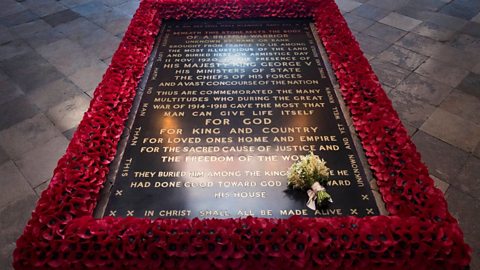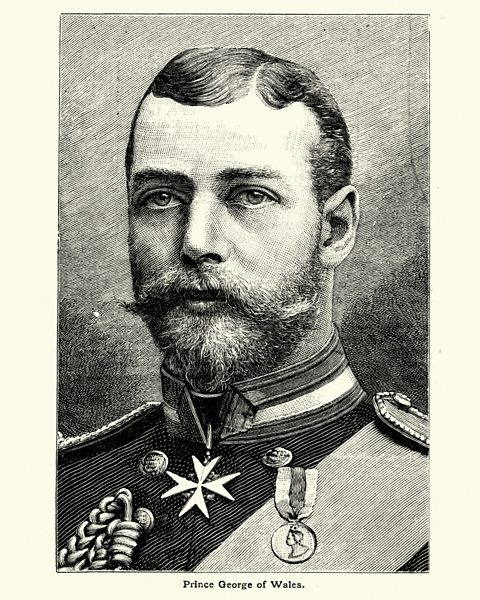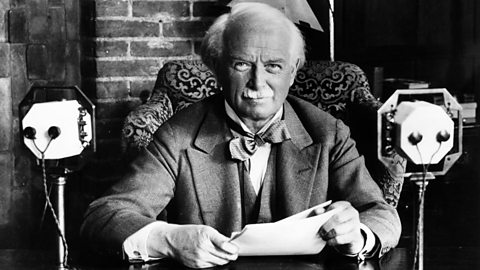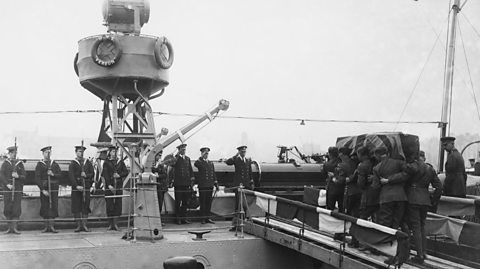
No one knows. Regardless, the Unknown Warrior has helped families up and down the country deal with their grief after the trauma of World War One.
Over the course of WW1, itвҖҷs estimated that almost 800,000 British and colonial troops died. On top of that, just under 200,000 were presumed missing or prisoners of war, with families back home left wondering if their loved ones would ever return.
This meant that they couldnвҖҷt be buried back home, and their families wouldnвҖҷt have anywhere to grieve.
A man called Reverend David Railton came face-to-face with the reality of this about halfway through the war in 1916. He was in the North of France, in a place called ArmentiГЁres, and stumbled across a grave in a back garden. On the tombstone he saw the words вҖңAn Unknown British Soldier // of the Black WatchвҖқ scratched in pencil.
Whilst extremely upsetting, it gave Reverend Railton an idea. He decided to write to some very important people to create a memorial back home, where families could grieve for their loved ones that were never found.
The first person he wrote to was Sir Douglas Haig, who was the commander of the British forces, explaining his idea. Sir Douglas never replied, and Reverend Railton thought his plan would never see the light of day.

However, in 1920, he decided to send out letters again, this time to the British War office, the Prime Minister David Lloyd George, and, last but not least, King George V.
King George was at first quite worried about the prospect of creating the grave, especially as the war had finished two years before this point. He thought it might make it harder for people to recover from their losses, rather than give them an outlet for their grief.
The Prime Minister, on the other hand, was very enthusiastic, and managed to persuade the King to see all the good things it could do for the country.


The next challenge was how they would choose the soldier who would be buried in the grave. Their identity had to remain unknown, as every mourning family had to feel as though the grave could be for their own loved one.
To do this bodies were selected from battlefields across France and Belgium, and brought to a chapel in Saint-Pol-sur-Ternoise in northern France just before midnight on 7 November 1920. Some say six bodies were chosen, but most people agree, on the basis of written accounts from the time, that it was actually four. They were brought from the battlefields at the Somme, Ypres, the Aisne and Arras. They were laid on stretchers and had Union Jacks covering them, so no one could see who they were.
Then, a man called Brigadier General Louis John Wyatt, who commanded the British troops in France, was tasked with choosing which body would be buried at Westminster Abbey. Just after the stroke of midnight, he made his choice, and they started to make the journey to London.

The General and the Unknown Warrior went home on HMS Verdun to Dover, before the coffin was taken by train to London, then placed in a horse-drawn carriage and brought to the Cenotaph in Whitehall. Here, King George laid a wreath on top of the coffin, before it travelled to Westminster Abbey to be buried.

As a gesture to their efforts in the war, the grave was filled with earth from French battlefields, and the marble used to make the tombstone was from Belgium. Both of these countries had fought alongside Britain as allies in the war.
Hundreds of thousands of people came to pay their respects at the grave that day. The congregation at Westminster Abbey included 100 veterans who had received the Victoria Cross, which is the highest possible award for bravery that can be given in the British Honours System. There were also approximately 1000 women who had lost their sons and husbands over the course of the war. In the following week, itвҖҷs estimated that around 1,250,000 people visited the site.
However, the Unknown Warrior did cause some controversy. There were rumours that Wyatt knew who the soldier was all along, and the ceremony of choosing him was all for show. To put these rumours to rest, Wyatt wrote this in the Daily Telegraph on 11th November 1939, two months after the outbreak of World War Two, on the 21st anniversary of Armistice:
вҖңThe four bodies lay on stretchers, each covered by a union jack, in front of the altar was the shell of the coffin which had been sent from England to receive the remains. I selected one, and with the assistance of Colonel Gell, placed it in the shell; we screwed down the lid. The other bodies were removed and reburied in the military cemetery outside my headquarters at St Pol. I had no idea even of the area from which the body I selected had come; no one else can know it.вҖқ
Today, the Unknown Warrior is still visited by lots of people from all over the globe. In fact, itвҖҷs one of the most visited war graves in the entire world. As Laurence Binyon wrote in his poem вҖҳFor the FallenвҖҷ, вҖңWe will remember them.вҖқ
This article was published in November 2018
World War One
Find out more about the start of the war, how it is remembered today and how it changed people's lives for ever.
